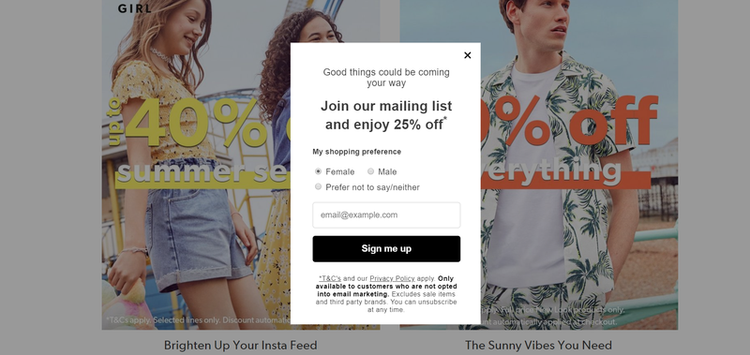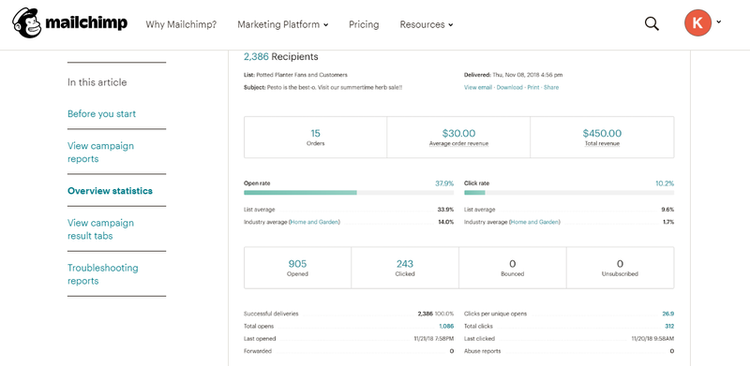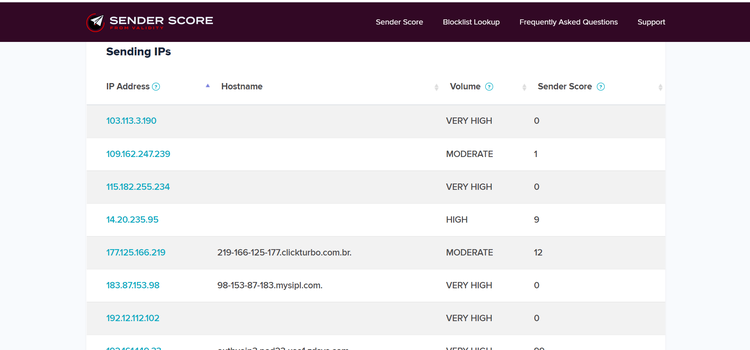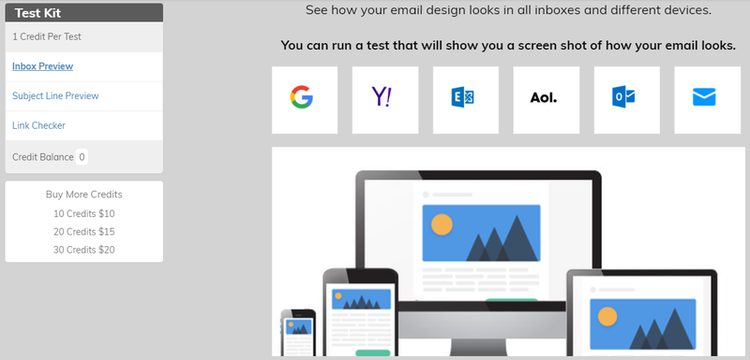Email deliverability is the ability to get your emails in your recipients’ inboxes rather than having them end up in the junk folder or being blocked by an email provider.
Email deliverability is not completely within your control. Each email service provider has its own way of deciding where emails should end up, and you are at the mercy of bad practices or inexperienced email marketing planning from your predecessors.
For example, if a previous email marketer sent out emails without testing them or without consent, then your IP or domain may be on a blacklist.
The good news is that there are steps you can take to make sure your email marketing campaigns end up in the right place.
The 6 best practices for email deliverability that land you in inboxes:
- Use double opt-in signups
- Build your email list organically
- Clean your email list regularly
- Check your sender score
- Test your emails before you send them
- Segment and personalize
1. Use double opt-in signups
Making sure your recipients know what they’re getting and that they do want to receive your emails is important since it means they’re more likely to read your messages and less likely to report them as spam or unsubscribe.
To do that, you can use double opt-in sign-ups. This means that after someone signs up to receive your newsletter on your website or landing page, you send them an email with a link to click and confirm their subscription.
It’s also important to specify what they will receive when they sign up for your newsletter, as well as what the frequency will be of your messages. If you send newsletters daily, then specify that on your sign-up form. And if you’re going to add someone who downloads an ebook to your mailing list, you need to make it crystal clear.
2. Build your email list organically
When you’re starting from scratch, it can be tempting to skip several steps and buy your email list instead of building it organically. You get a bunch of email addresses without spending time and effort to get your list off the ground. But don’t do it.
If someone offers to sell you an email list, run in the other direction unless you want to cause serious damage to your email deliverability and sender score. If your recipients haven’t asked to be added to your email list, and you’re sending them unsolicited emails, they may mark your messages as spam. At worst, you could be breaking the law.
Here are some tips to help you build your email list organically:
- Tap into your network and ask your contacts if they -- or their contacts -- are interested in receiving your newsletter.
- Incentivize sign-up, whether that’s a free ebook download or a 10% discount code.
- Make your emails shareable, so people recommend them to their friends and family.
- Optimize sign-up forms to make them easy to fill in with an attractive layout.
- Promote your newsletter through social media and paid ads.
This popup below from a British fashion retailer offers a 25% discount to encourage people to sign up for its newsletter. The company also asks for basic shopping preferences to better personalize its emails.

British retailer New Look offers 25% off products to incentivize newsletter sign-ups. Image source: Author
3. Clean your email list regularly
When it comes to managing your email list, keep in mind that quality of contact always trumps quantity if you want to improve your email deliverability. Prune your lists regularly by removing spam addresses, duplications, and any email addresses that don’t exist or bounce.
Beyond that, it’s also good practice to remove subscribers who are not opening your emails or clicking any links. This will boost your email delivery and open and click rates, and it will send a sign to email providers that your messages are useful and should end up in a recipient’s inbox.
You can also use an SMTP service provider to protect your email reputation by blocking spam from being sent by your server.
Mailchimp’s email analytics function does a great job of helping you understand who is opening and engaging with your emails and who is inactive.

Mailchimp’s analytics help you track inactive subscribers. Image source: Author
4. Check your sender score
You might think you’re doing everything right, but then you wonder why your open and click rates are still so low. Your email messages might be ending up in recipients’ spam folder without your knowledge. That’s why you need to check your sender score. If it’s low, then you can start to investigate where the issue lies and improve your email deliverability.
Unfortunately, email providers all use different metrics to come up with your sender score. But you can use a third-party tool to help you understand what kind of score you have and offer email deliverability tests to check the score of specific messages.
One of these tools is Sender Score. It breaks down the sender score for the different IP addresses and email subdomains you use to send emails. That’s why it’s important to warm up your email IP address by sending small amounts of emails at the start rather than sending a mass email to thousands of people that might be marked as spam and get you added to a blacklist.

Sender Score provides an estimate of your sender reputations. Image source: Author
5. Test your emails before you send them
If your emails have typos, the images don’t display correctly, or the links don’t work, they’re more likely to end up in the spam folder or being blocked by the email provider. That’s why you need to test all emails before you send them.
To do that, you can send test versions to yourself and a few coworkers. You can also use email marketing software to scan your email and pick up any issues.
VerticalResponse’s Test Kit shows you a screenshot of how your email will look with different email providers -- including Gmail, Outlook and Yahoo -- and on different devices.
With Test Kit, you can run a test that shows you a screenshot of your links so you can make sure you don't have any broken ones. You can also carry out email subject line testing to see if the text is the right length for all email providers.

You can test your emails on various email platforms to see how they'll look. Image source: Author
6. Segment and personalize
Sending relevant and useful email marketing content is key to getting more opens, clicks, subscribers, and overall engagement. These send a message to the email provider that your messages deserve to end up in a recipient’s inbox.
Instead of sending every subscriber every email, segment your audience so you only send them content that they’re interested in. Personalize each email to make it as useful and relevant as possible.
This all starts with your signup form. Add fields that can help you segment users according to their demographic data or interests. For example, if you sell shoes, you could add fields for shoe size or style.
You can also segment emails according to customer behavior, including what pages they’ve visited on your website and past purchasing behavior.
Most email marketing solutions include dynamic segmentation capabilities where they add or remove recipients from segments depending on whether they start or stop meeting certain criteria.
For example, if a customer hasn’t purchased anything in the past six months, the software automatically adds them to your winback campaign segment. When they purchase something, the software automatically removes them from there.
ConvertKit lets you add as many criteria as you like to create segments, both excluding and including customers based on these criteria.
The kinds of criteria you can use to segment customers include:
- Location
- Subscription date
- Purchase behavior

ConvertKit allows you to use multiple criteria to create segments. Image source: Author
Automate the process
Whether you’re starting from scratch or trying to optimize a campaign, email marketing software automates a lot of manual steps, making it much easier to create campaigns that end up in your recipients’ inbox. Take a look at our independent reviews to help you make an informed decision.
Our Small Business Expert
We're firm believers in the Golden Rule, which is why editorial opinions are ours alone and have not been previously reviewed, approved, or endorsed by included advertisers. The Ascent does not cover all offers on the market. Editorial content from The Ascent is separate from The Motley Fool editorial content and is created by a different analyst team.